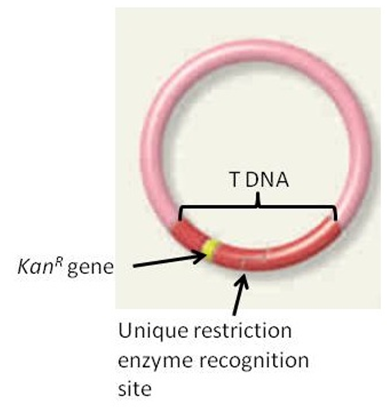The secretory systems of Type III and Type IV pathogenic bacteria differ in their mode of attacking cells in which of the following ways?
A. Type III systems bind to the cellular membrane by slimy mucilage and toxins diffuse across the membrane, whereas Type IV systems infect materials using pili as transfer tubes.
B. Type IV systems bind to the cellular membrane by slimy mucilage and toxins diffuse across the membrane, whereas Type III systems infect materials using pili as transfer tubes.
C. Both systems attach to cells in the same way but they differ merely in the chemicals that they inject into the host cell.
D. Type III systems use flagella modified as "syringes" to inject materials into cells they are infecting whereas Type IV systems use modified pili as transfer tubes.
E. Type IV systems use flagella modified as "syringes" to inject materials into cells they are infecting whereas Type III systems use modified pili as transfer tubes.
D. Type III systems use flagella modified as "syringes" to inject materials into cells they are infecting whereas Type IV systems use modified pili as transfer tubes.
You might also like to view...
Which of the following mechanisms are causal explanations for bird song?
A. Young males learned their song from their fathers. B. Songs are used by males to attract a mate. C. The ritualization of the vocalization became species specific. D. Air passing through a bird's specialized singing organ, the syrinx, vibrates the surrounding organs.
You wish to express gene X in soybeans. You clone gene X into a Ti plasmid (shown below), transform the recombinant plasmid into Agrobacterium tumefaciens, treat soybean cells with the transformed A. tumefaciens, and place the cells on medium containing the antibiotics kanamycin and carbenicillin. What is the purpose of these two antibiotics?

A. The carbenicillin ensures that the cells contain a Ti plasmid and the kanamycin ensures that the cells have a recombinant Ti plasmid.
B. The carbenicillin and kanamycin both ensure that the cells picked up recombinant T DNA.
C. The kanamycin ensures that the cells contain recombinant T-DNA and the carbenicillin kills the A. tumefaciens.
D. The carbenicillin ensures that the cells contain recombinant T-DNA and the kanamycin kills the A. tumefaciens.
E. The carbenicillin and kanamycin both kill the A. tumefaciens.
In DNA cloning, __________ cut DNA into pieces. Fill in the blank(s) with the appropriate word(s)
Which of the following causes mutations in DNA?
What will be an ideal response?